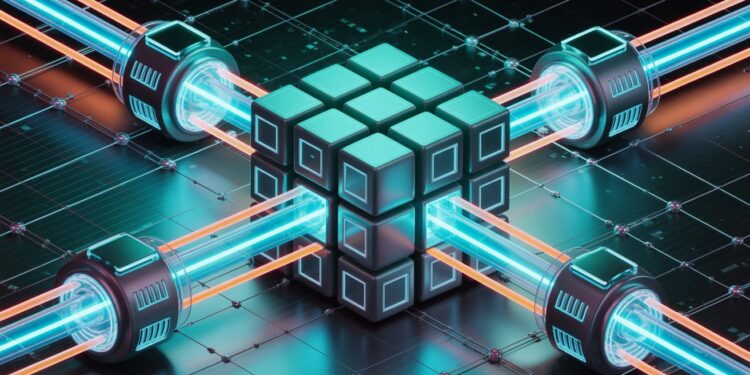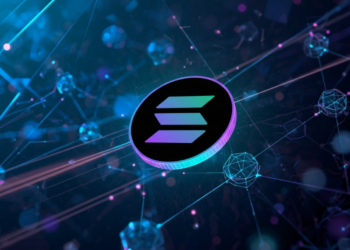Introduction
Blockchain technology has changed the way we think about money, data, and trust. But as more people use these networks, they face big challenges. Mainnet blockchains like Bitcoin and Ethereum are slow and costly when too many users jump in. This can make transactions frustrating and limit new applications.
Luckily, sidechains and payment channels offer fresh ways to handle more transactions. These solutions help networks stay fast and cheap without sacrificing security. Knowing how they work is key for developers, businesses, and anyone interested in blockchain’s future.
Understanding Blockchain Scalability Challenges
The Limitations of Mainnet Blockchains
Most blockchains have a cap on how many transactions they can process. For example, Bitcoin handles about 7 transactions per second (TPS). Ethereum does a bit better, with around 15-30 TPS. This smaller capacity causes delays, especially during busy times.
High transaction fees and long wait times become common. That pushes users toward faster options, or makes big projects impossible to run smoothly. For decentralized finance (DeFi), these challenges slow down innovation and adoption.
Causes of Scalability Problems
Several factors slow down blockchain networks:
- Block size and block time limit how many transactions fit in each block.
- Consensus mechanisms — like proof of work — can take time to confirm transactions.
- High demand increases network load, pushing it beyond capacity.
When these issues pile up, the network becomes congested, making transactions more expensive and slower.
The Need for Layer 2 Solutions
Layer 2 solutions sit on top of the main blockchain to ease congestion. They let most transactions happen off the main chain, then settle the final state back on the mainnet. This speeds things up and lowers costs.
On-chain scaling involves making the main blockchain bigger or faster, but that often isn’t enough. Off-chain solutions like sidechains and payment channels can dramatically improve performance for everyday use.
Exploring Sidechains: Decoupling Scalability
What Are Sidechains?
Sidechains are separate blockchains connected to the main network. They run independently but can transfer assets back and forth. Think of them as smaller lanes parallel to a highway, easing traffic on the main road.
They operate with their own rules. Developers can test new features or scale without risking the main chain. Once the sidechain is stable, users can move assets between them easily.
Benefits of Sidechains
- More transactions happen outside the main chain.
- They allow experimenting with new tech and features.
- They reduce pressure on the main network, keeping it fast.
Using sidechains, we can process many more transactions simultaneously, boosting scalability without sacrificing security.
Use Cases and Examples
- RSK (Rootstock): Enables Ethereum-like smart contracts on Bitcoin’s network.
- Liquid Network: Lets Bitcoin users transfer assets quickly and privately.
- Token interoperability: Assets can move seamlessly across different blockchains, opening doors for new projects.
Challenges and Limitations
- Cross-chain transfers can have security risks if not managed carefully.
- Getting enough liquidity and user adoption remains tough.
- Integrating new sidechains adds complexity, requiring ongoing maintenance.
Payment Channels: Enabling Fast and Cost-Effective Transactions
What Are Payment Channels?
Payment channels let users transact directly without involving the entire network each time. They open a private “channel,” perform many transactions instantly, then close it. The final state gets recorded on the main chain.
This approach keeps transactions off the main network but ensures they’re trusted and secure. It’s like writing checks in person, then recording the final balance once done.
Key Types of Payment Channels
- Payment channel networks: Like the Lightning Network for Bitcoin, connecting many users to route payments.
- State channels: Handle complex smart contracts, allowing interactions without on-chain confirmations each time.
Advantages of Payment Channels
- Near-instant transaction confirmation.
- Much lower fees, especially for small or frequent payments.
- Perfect for high-speed use cases like gaming, micro-tips, or retail.
Real-World Examples and Implementations
- Bitcoin Lightning Network: Has thousands of nodes, enabling quick and cheap payments.
- Raiden Network: Brings similar benefits to Ethereum.
- Use cases: Micro-tipping content creators, in-game transactions, and point-of-sale payments.
Limitations and Considerations
- Channels have capacity limits; they can only hold a certain amount.
- Managing liquidity can be tricky, especially with many users.
- Routing payments across many channels takes planning and can get complex.
Integrating Sidechains and Payment Channels for Enhanced Scalability
Synergy Between Technologies
Sidechains and payment channels aren’t rivals — they work best together. Sidechains handle larger transfers and asset swaps, while payment channels speed up small, frequent transactions.
Combine these tools, and you get a flexible, scalable blockchain system. Users can transfer assets quickly and perform many micro-transactions off-chain, reducing network load.
Practical Deployment Scenarios
- Enterprise blockchains: Use sidechains for processing large data sets, while payment channels handle customer transactions.
- Cross-chain swaps: Move assets between different chains without delay, thanks to sidechains and channels.
- Case studies: Several projects now test combinations of these solutions to optimize performance.
Actionable Tips for Developers and Businesses
- Focus on security: audit your code and test thoroughly.
- Pick the right solution based on your needs — not every project needs both.
- Consider liquidity management for payment channels to avoid stuck funds.
- Keep user experience simple to encourage adoption.
Conclusion
Overcoming blockchain scalability hurdles is essential for mainstream success. Sidechains and payment channels provide powerful ways to keep networks fast, affordable, and ready for growth. By understanding and combining these technologies, we unlock new possibilities for DeFi, gaming, and everyday transactions.
The future of blockchain depends on continuously improving layer 2 solutions. These tools will help us build faster, more scalable networks that can handle the demands of tomorrow. As adoption grows, embracing sidechains and payment channels is the smart move for developers, businesses, and users alike.
Join Us : Twitter | Website | GitHub | Telegram | Facebook | YouTube























